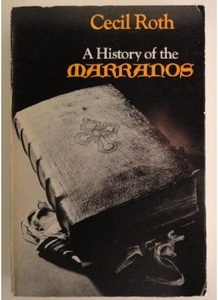NAMES ANALYSIS REPORT
You searched for:"Mocatta",
Here's what we found
The English meaning of Mocatta is Champion, Fortress, a
river Waddy Mokatta or mason.
The name Mocatta is of Arabic origin.
There are many indicators that the name Mocatta may be of Jewish origin, emanating from the Jewish communities of Spain and Portugal.
When the Romans conquered the Jewish nation in 70 CE, much of the Jewish population was sent into exile throughout the Roman Empire. Many were sent to the Iberian Peninsula. The approximately 750,000 Jews living in Spain in the year 1492 were banished from the country by royal decree of Ferdinand and Isabella. The Jews of Portugal, were banished several years later. Reprieve from the banishment decrees was promised to those Jews who converted to Catholicism. Though some converted by choice, most of these New-Christian converts were called CONVERSOS or MARRANOS (a derogatory term for converts meaning pigs in Spanish), ANUSIM (meaning "coerced ones" in Hebrew) and CRYPTO-JEWS, as they secretly continued to practice the tenets of the Jewish faith.
Our research has found that the family name Mocatta is cited with respect to Jews & Crypto-Jews in at least 12 bibliographical, documentary, or electronic references:
From the civil records of Amsterdam, The Netherlands
The Amsterdam Municipal Archives possess a complete set of registers of intended marriages from 1578 to 1811, the year when the present Civil Registry was started. Between 1598 and 1811, 15238 Jewish couples were entered in these books. Both the number of records and the volume of data that may be extracted from them are unprecedented.
From the records of Bevis Marks, The Spanish and Portuguese Congregation of London
Bevis Marks is the Sephardic synagogue in London. It is over 300 years old and is the oldest still in use in Britain.The Spanish and Portuguese Jews' Congregation of London has published several volumes of its records: they can be found in libraries such as the Cambridge University Library or the London Metropolitan Archive
From the burial register of Bethahaim Velho Cemetery, Published by the Jewish Historical Society of England and transcribed by R. D. Barnett.
The register gives us dates for the burials in the "Bethahaim Velho" or Old Cemetery. The dates are listed as per the Jewish calendar.
Finding Our Fathers: A Guidebook to Jewish Genealogy, by Dan Rottenberg
In this work Dan Rottenberg shows how to do a successful search for probing the memories of living relatives, by examining marriage licenses, gravestones, ship passenger lists, naturalization records, birth and death certificates, and other public documents, and by looking for clues in family traditions and customs. Supplementing the "how to" instructions is a guide to some 8,000 Jewish family names, giving the origins of the names, sources of information about each family, and the names of related families whose histories have been recorded. Other features included a country-by-country guide to tracing Jewish ancestors abroad, a list of Jewish family history books, and a guide to researching genealogy.
A History of the Marranos, by Cecil Roth.
The expulsion of the Jews from Spain in 1492 by the infamous decree of King Ferdinand and Queen Isabella was the culmination of a series of anti-Jewish persecutions throughout the 14th and 15th centuries in which thousands of Jews were massacred. Thousands of others converted in order to escape death. After the expulsion many more joined the ranks of these "new Christians" as an alternative to exile. A large number of converts, while outwardly professing Christianity, secretly continued to practice Judaism. These Marranos, as they were popularly known, were then mercilessly persecuted by the dreaded Inquisition which through tortures of forced confessions and auto-da-fes sent thousands to the stake. Many others managed to escape to countries outside the reach of the Inquisition where they created a widespread Marrano diaspora. Thousands of Marranos have survived even into our times. This seminal work by the eminent historian traces the tribulation of these secret Judaizers as well as the fate of those who succeeded in escaping to other lands where many of them rose to prominence in various fields of endeavor.
The Sephardim of England, by Albert M. Hyamson
A history of the Spanish & Portugese Jewish Community, 1492-1951.
Noble Families Among The Sephardic Jews, by Isaac Da Costa, Bertram Brewster, and Cecil Roth.
This book provides genealogy information about many of the more famous Sephardic families of Iberia, England and Amsterdam. It documents the assimilation, name changes and conversion of many Sephardic families in Spain, England and The Netherlands. There is a large section dealing with the genealogy of the members of Capadose and Silva families in Spain and Portugal. This reference includes genealogical tables and a translation of Da Costa’s 1850 work "Israel and the Gentiles", with chapters by Bertram Brewster on the Capadose conversion to Christianity and by Cecil Roth on their Jewish history.
The Circumcision Register of Isaac and Abraham De Paiba (1715-1775) from the Archives of the Spanish and Portuguese Jews' Congregation of Bevis Marks (London. England).
This register is from the manuscript record preserved in the Archives of the Spanish and Portuguese Jews' Congregation of London named "Sahar Asamaim" transcribed, translated and edited by the late R.D. Barnett, with the assistance of Alan Rose, I.D. Duque and others; There is also a supplement with a record of circumcisions 1679-1699, marriages 1679-1689 and some female births 1679-1699, compiled by Miriam Rodrigues-Pereira. The register includes surnames of those circumsized as well as the names of their Godfathers & Godmothers.
The Circumcision Register of Isaac and Abraham De Paiba (1715-1775) from the Archives of the Spanish and Portuguese Jews' Congregation of Bevis Marks(London. England).
The circumcision register of Isaac and Abraham de Paiba (1715-1775): from the manuscript record preserved in the Archives of the Spanish and Portuguese Jews' Congregation of London named "Sahar Asamaim" transcribed, translated and edited by the late R.D. Barnett, with the assistance of Alan Rose, I.D. Duque and others; There is also a supplement with a record of circumcisions 1679-1699, marriages 1679-1689 and some female births 1679-1699, compiled by Miriam Rodrigues-Pereira. The register includes surnames of those circumsized as well as the names of their Godfathers & Godmothers.
ETSI, Volume 4, No.12 dated March 2001, "Aliases in Amsterdam", by Viberke Sealtiel-Olsen, a list of alias names used by Sephardim in Amsterdam. True Sephardic Name=Alias Name
When the Conversos fled Portugal to settle in Amsterdam they returned openly to Judaism. Because they often still had relatives in Portugal, they tried to protect them by using aliases in their transactions. However, it wasn’t only the Portuguese who wound up in Amsterdam. Even a century after 1492, conversos were finding their way from Spain to Amsterdam. Listing a person as a Portuguese merchant generally meant he was Jewish. Their family contacts worldwide, along with their language skills, were great commercial assets in their farflung business ventures. And in their contacts with family back home, they had to be discreet as to not bring suspicion on relatives left behind This work is a wonderful research tool for Sephardic research in Amsterdam.
ETSI, Volume 4, No.12 dated March 2001, "Aliases in Amsterdam", by Viberke Sealtiel-Olsen, a list of alias names used by Sephardim in Amsterdam. Alias Name=True Sephardic Name
When the Conversos fled Portugal to settle in Amsterdam they returned openly to Judaism. Because they often still had relatives in Portugal, they tried to protect them by using aliases in their transactions. However, it wasn’t only the Portuguese who wound up in Amsterdam. Even a century after 1492, conversos were finding their way from Spain to Amsterdam. Listing a person as a Portuguese merchant generally meant he was Jewish. Their family contacts worldwide, along with their language skills, were great commercial assets in their farflung business ventures. And in their contacts with family back home, they had to be discreet as to not bring suspicion on relatives left behind This work is a wonderful research tool for Sephardic research in Amsterdam.
Sephardic Family Trees found in Jewish Encyclopedias by Mathilde Tagger
Family trees found in The Jewish Encyclopedia (NY 1901-1904) or Encyclopaedia Judaica (Jerusalem, 1972)
Around the 12th century, surnames started to become common in Iberia. In Spain, where Arab-Jewish influence was significant, these new names retained their old original structure, so that many of the Jewish surnames were of Hebrew derivation. Others were directly related to geographical locations and were acquired due to the forced wanderings caused by exile and persecution. Other family names were a result of conversion, when the family accepted the name of their Christian sponsor. In many cases, the Portuguese Jews bear surnames of pure Iberian/Christian origin. Many names have been changed in the course of migration from country to country. In yet other cases "aliases", or totally new names, were adopted due to fear of persecution by the Inquisition.







